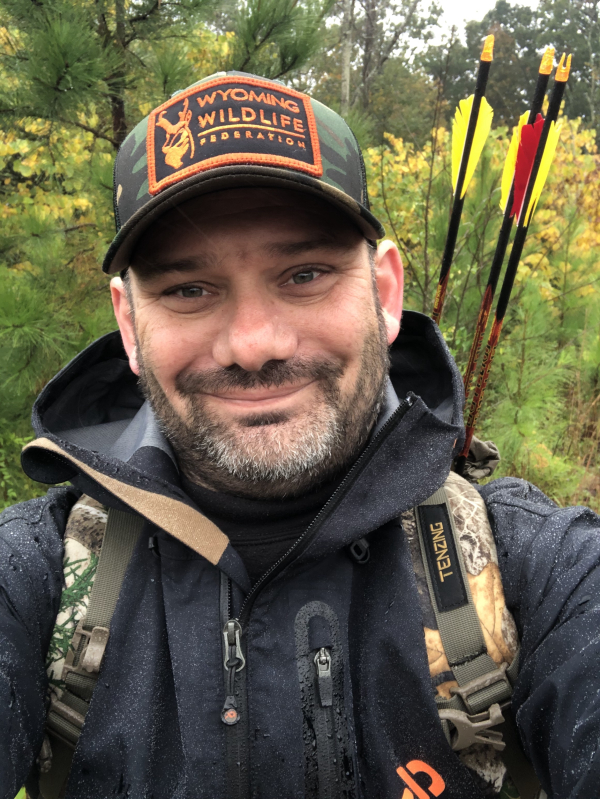By Jay Pinsky – Editor – The Archery Wire & Hunting Wire
A few weeks ago, I visited my local archery shop, Hoffman's, to catch up with its owner, Farron Moss, and learn how I could improve The Archery Wire. He had a few ideas.
Another thing I did was add another bow to my arsenal. I looked at several entry-level and intermediate bows to supplement the Mathews Triax I've shot for years. I looked at Elite, Hoyt, PSE, Bowtech, and Mission bows.
I was reminded of how unique each bow was and how critical fit and comfort are to shooter success. All the bows I looked at worked and worked well. They came in all shapes and sizes, and colors. I wanted something vastly different from the Mathews footprint I am so used to so I could speak more diversely as an editor. But I learned how profound the Mathews footprint was to my shooting style, comfort, and ultimately my confidence. I am sure this may be true for other brands as well and explains the deep allegiance so many archers have for their bow brand.
The truth is one brand is probably no better than another at each price point, but there's no denying they're all quite different, and those differences in feel matter a lot more to archers than we may admit. It could be familiarity. It could be ergonomics. It could be muscle memory. Maybe it's all these things and a few more subconscious factors that help us decide which bow is the right for us, but to me, there was no doubt when that "right" bow was found.
I left Hoffman's with the Mission HAMMR, an entry-level bow, that I set at 42 pounds, versus my Triax, which is set at 80 pounds. The biggest factor for me was how small the HAMMR is, and I immediately saw its advantages in blinds and tree stands. Furthermore, getting an entry-level bow to go with an advanced bow would enable me to focus on bow technology differences, build quality, sight differences, and other build qualities which are worlds apart from the top-of-the-line Triax and the entry-level HAMMR. I am sure it will – eventually. But what stood out first wasn't the differences in the bows, but the differences in draw weights and the enormous amount of knowledge I gained about my shooting style and habits drawing less weight revealed.
The lower weight draw allowed me to focus more on my draw, hold, aim, control, and decision-making process at full draw. It made me immediately more patient as an archer. (Yes, I can drop weight on my Triax, but bringing in a different bow was the point.)
Drawing too much weight doesn't make you macho. It makes you miss. Here are some contributing factors to that miss.
1. Fatigue: Drawing too much weight can quickly tire your muscles, leading to shaky aim and poor accuracy.
2. Form: Drawing too much weight can cause you to adjust your shooting form, leading to inconsistent shots and reduced accuracy.
3. Release: If you struggle to release the bowstring properly due to excessive draw weight, it can affect arrow flight and accuracy.
4. Bow Stability: When you draw too much weight, it can cause your bow to become unstable, leading to poor accuracy.
5. Overcompensation: If you need help with drawing too much weight, you may start to overcompensate by using too much force or adjusting your aim, leading to reduced accuracy.
Finding the right draw weight for your strength and skill level is essential to ensure accuracy. A professional bow technician can help you find the perfect draw weight for your needs.
Another critical element to drawing less weight is that it empowers you to slow down. Patience before, during, and after the shot can and most likely does contribute to your success more than how fast your arrow flies, how advanced your broadhead is, or how expensive your new camouflage was. Patience as a bowhunter is the most valuable element you can add to your hunt – and it's free.
What does patience give us?
1. Reducing Stress: When you slow down, you give yourself a chance to lower your stress levels. This can help you feel more relaxed and focused, improving your productivity.
2. Improving Memory: When you slow down, you allow your mind to process information more effectively. This can help you remember things more efficiently, improving your focus.
3. Enhancing Creativity: When you slow down, you allow your brain to explore new ideas and perspectives. This can help you think more creatively, enhancing your focus.

Bowhunting is one of the best ways to learn patience, problem solving, and your personal limits with both.
|
4. Increasing Clarity: When you slow down, you allow yourself to clear your mind of distractions. This can help you to focus more clearly on the task at hand.
5. Improving Decision-Making: When you slow down, you give yourself a chance to think more carefully about your decisions. This can help you to make better choices and improve your focus.
You can visualize how each factor can play a role during your hunt. The coolest part of having more patience is you can apply it to other aspects of your life, and the payoffs are similar.
As spring hunting seasons wind down and our preparation for fall seasons spin up, see if dropping a few pounds (on your draw) and gaining a little patience helps you become a better archer. I bet it does.